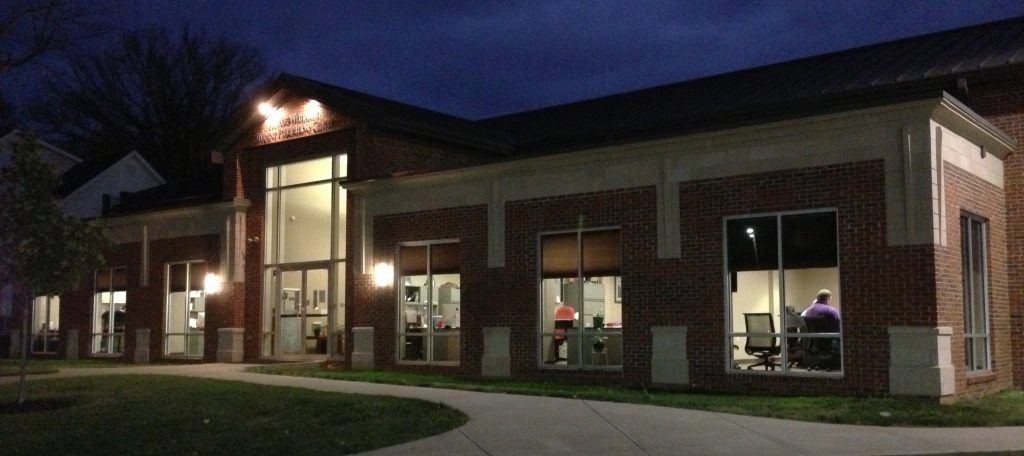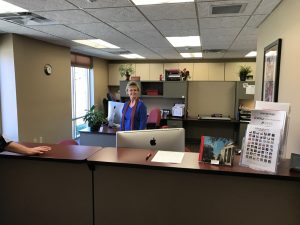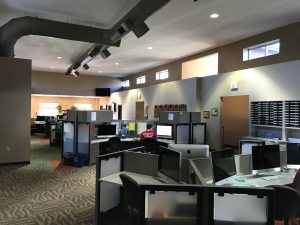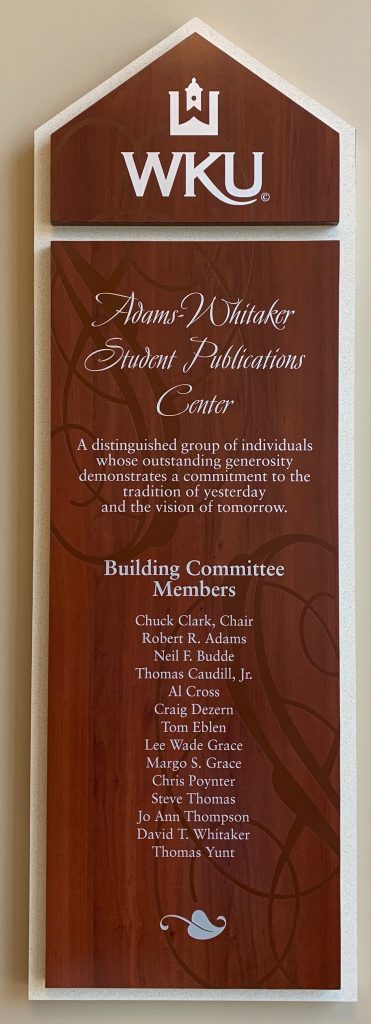The idea for the Adams-Whitaker Student Publications Center – home of the College Heights Herald, the Talisman, Cherry Creative and Student Publications Advertising – was sparked in a circle of friends after the annual Student Publications Homecoming Breakfast in 2004.
As they chatted in the old ballroom of Garrett Conference Center, it became obvious there was a problem.
What was then called Mass Media & Technology Hall had recently opened on South Lawn at the bottom of the Hill, as the new home of the School of Journalism & Broadcasting (now the School of Media & Communication). But the Herald and the Talisman remained at the top of the Hill in Garrett. And as anyone who has ever trekked the campus knows, that uphill climb—well, you just don’t take it if you don’t have to.

When plans were originally being put together for MMTH, now Jody Richards Hall, the Herald and the Talisman were supposed to be located in a glassed-in area off the atrium lobby. But in the final plans, that became a computer lab and the publications were left up the hill.

The challenge of recruiting staffers, no matter how great the experience, became tougher. So tough, in fact, that it threatened the publications.
So that October morning in 2004, that group of alumni decided something needed to be done. Working with Bob “Mr. A” Adams and Leslie Watkins, a development officer whose portfolio included Student Publications, the group became the Student Publications Building Committee.
The committee set about doing the groundwork for the campaign, meeting frequently via conference call, and starting to reach out to alumni across the country to explain what was going on: We needed a new home for Student Publications closer to the journalism programs, and it was going to take alumni involvement to make it happen.

The committee considered several old houses that were then along Normal Street near MMTH, but none seemed right. The best solution, the committee agreed, was a new building designed and built as a newsroom of the future, and designed to adapt to changing technology. The committee figured it would need to raise between $800,000 and $1 million to make it happen.
During the summer of 2005, the committee met with WKU President Gary Ransdell, who endorsed the idea and committed that WKU would commission an architect/engineering firm to design a building once the committee had secured at least $600,000 in commitments, and to start construction once $800,000 had been committed to the project from private sources. WKU would provide the site for the building, across the street from MMTH, and would agree to take care of routine maintenance and utilities.

With that information in hand, the committee began reaching out to alumni across the country and asking them to give. And they did.
When the campaign was formally announced at Homecoming in October, 2005, more than $350,000 had been committed. By Dec. 1, 2005, the effort had hit the mark of $600,000 in pledges. By March 2006, more than $800,000 had been pledged. Ground was broken at Homecoming in November 2006, and the building was dedicated at Homecoming in October 2007. It opened for business in January 2008.
All together, the Herald, the Talisman and our alumni and friends brought more than $1 million to the table. Alumni and friends contributed about $785,000 (there’s another $45,000 or so that was pledged but remains unpaid), the Herald put in $190,000 from its reserves from advertising sales over the years, and the Talisman put in about $75,000 from its reserves.
Construction costs on the building more than doubled initial projections of $800,000, partly because of the big increase in materials and labor costs in the South because of reconstruction from Hurricane Katrina. In the end, the total project cost $1.7 million, and the gap was filled with money reallocated by then-Provost Barbara Burch.
Seventeen years after it opened, the Adams-Whitaker Student Publications Center remains a model for student media programs nationwide and is a point of pride for our students and alumni.
